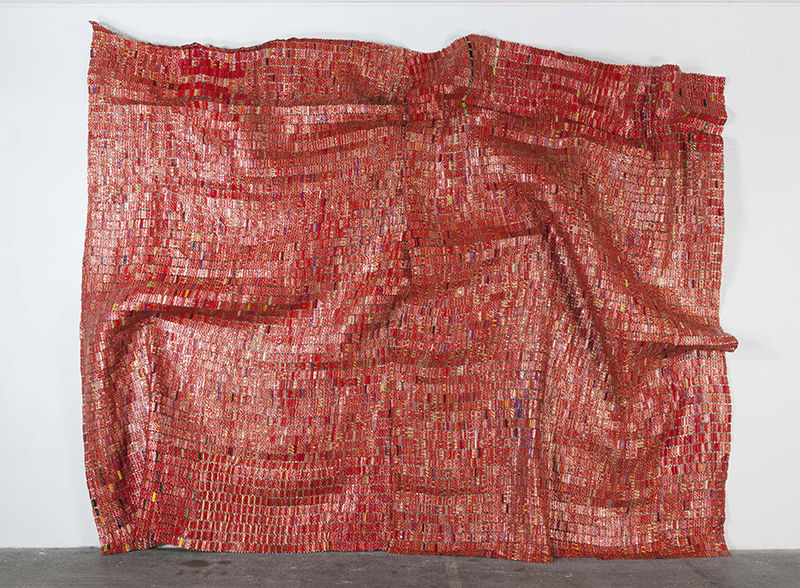A few weeks ago, I went on a field trip with some friends to The Broad, the new-ish downtown L.A. museum of contemporary art.
My friends wanted to see an exhibit, since closed, of the photographer Cindy Sherman so I bought a $12 timed-entry ticket, too.
“I am trying to make other people recognize something of themselves rather than me,” says Sherma
Really? Well, how about taking a picture of one of them?
Instead, Sherman has made a career of taking photos of herself in various disguises.
There’s the repulsive clown series, the sexual fantasies series, the silent film star series, the fashion photo series. In each, she presents as vapid, vaguely grotesque and a person with zero inner life.
Why, here’s Cindy looking like a battered woman. Cindy looking like a British matron with a prosthetic nose. Cindy looking like a mental patient wearing a red dress, creepy brown hat and one green glove. What could it mean?
Nothing.
People wear “masks.” Wow, that’s new. People have different facets to their identities. Why, I never thought of that before!
I made my way upstairs. A garish cluster of what appeared to be oversized Dollar Store Christmas bulbs in a shape vaguely evocative of, as the helpful docent put it, “certain body parts,” turned out to be entitled “Tulips.”
This desecration of a beautiful and holy flower is by Jeff Koons, whose oeuvre includes such series as “Banality” and “Luxury and Degradation.” “Tulips” comes in five versions. Las Vegas entrepreneur Steve Wynn paid $33.7 million dollars for one of them.
One nearby wall was taken up with a large bubblegum pink mural in the Hello Kitty genre. Another fellow had come up with an oversized dining room table and chairs, big enough to walk beneath. No particular craft to the workmanship. No reflection on the deep inner life of a table. Just, here’s an object: I know, let’s make it big! Again: Wow, that’s original.
One work stood out as sharply as if it had crashed through the roof of the $140-million-dollar structure (if only!) from a different realm. This was “Red Block” (2010) by El Anatsui, a Ghana-born artist whose career has developed largely in Nigeria.
I first encountered El Anatsui at UCLA’s Fowler Museum of Cultural History back in 2010. The piece — a giant wall hanging, fluid, shimmery and the color of the inside of a sardine can — was entitled “Versatility” (2006).
These pliable “cloths,” as El Anatsui calls them, are based on African kente cloth, a strip-woven cloth made by the Asante people of Ghana and the Ewe peoples of Ghana and Togo. For El Anatsui, the son and brother of professional kente weavers, the cloth has both personal meaning and symbolic power.
As for the metal neck rings, the artist notes that they “encapsulate the essence of the alcoholic drinks which were brought to Africa by Europeans as trade items at the time of the earliest contact between the two peoples.”
“To create these cloths,” the website for his artwork at the National Museum of African Art in Washington, D.C. continues, “Anatsui uses labels from local Nigerian brands of whiskey, rum, vodka, brandy and other potent libations with names such as Chairman, Dark Sailor, King Solomon, Makossa, 007, Top Squad and Ecomog (named after the multilateral, though largely Nigerian, armed force established in 1990 to intervene in the Liberian civil war).”
El Anatsui has also made sculptures and assemblages out of evaporated milk cans, cassava graters, ceramic plates and snippets of copper wire. “Versatility” was part of a series that had been inspired by “huge piles of detritus from consumption,” but his spirit was resurrectional, not cynical.
Approximately 17 by 11 feet, “Red Block” is also made of flattened foil labels from the necks of liquor bottles, each punched with tiny holes and painstakingly connected with copper wire. Viewed from afar, the piece is truly gorgeous, thrillingly draped, and somehow cheery, while up close, the malleable metal evokes resilience and adaptability.
In working with aluminum, Anatsui has said that he intends to “subvert the stereotype of metal as a stiff, rigid medium and rather reveal it as a soft, pliable, almost sensuous material capable of attaining immense dimensions and being adapted to specific spaces.”
He also means to invite reflection on the disposability of human life, and the effect of colonialism, global economics and the pillaging of the planet on the poor.
To make art from the bottles that held the substance responsible for so much human devastation — but also so much human conviviality, conversation and fun — is to embrace a strange and puzzling paradox.
As Carl Jung once noted, the word “alcohol in Latin is ‘spiritus’ and you use the same word for the highest religious experience as well as for the most depraving poison. The helpful formula therefore is: spiritus contra spiritum.
Besides “Red Block,” The Broad owns two other “cloths” by El Anatsui, not currently on view: “Strips of Earth’s Skin” (2008) and “Intermittent Signals” (2009).
Now those are works that might help “other people recognize something of themselves” rather than Cindy Sherman.
I say bring them out. Give them a whole floor.
Heather King is a blogger, speaker and the author of several books.

